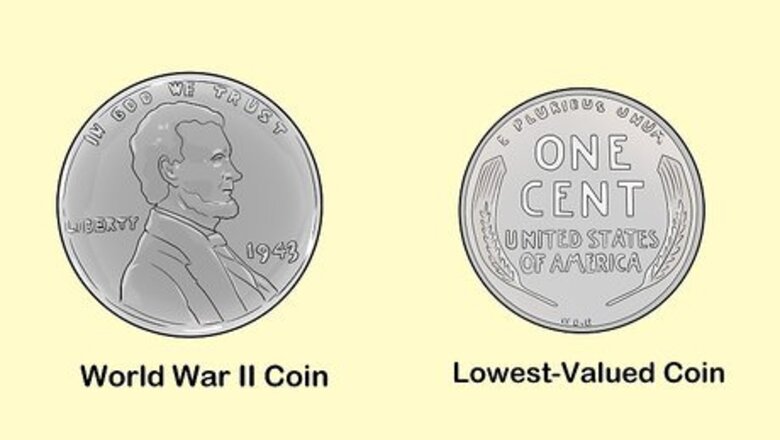
views
Building Your Collection

Find a type of coin to collect. There are thousands of different coin styles out there ranging in size, denomination, origin, age, and rarity. Though it may seem daunting at first, picking a style of coin to search for will keep you focused and make the hunt far more enjoyable. Remember, there’s no right way to collect, so pick a type of coin that speaks to you. Some ideas include: A penny from each year you’ve been alive. One of every coin available in the US since World War II. One of every country’s lowest-valued coin from the year you were born.

Find a good price range for you. Old, rare, misprinted, and uncirculated coins are cool, but they are also incredibly expensive. Cheaper alternatives include generally circulated coins, which can be found by digging through pocket change and bank rolls, or special currencies released in the recent past, like the US State Quarters line. Many foreign coins sell for far less than their US counterparts. For budget collecting, look for 5 cent pieces from the Netherlands (1913-40), Canada (1922-36), and France (1898-1921) or coins from small countries like Luxembourg.

Look for coins with little wear. When looking for collectibles, keep your eyes open for flat, non-dented coins with few scuffs and scratches. Look for coins that have retained most of their reflective properties, meaning they have not changed hands often. Even if a coin is 500 years old, collectors should expect it to be in reasonably good condition.
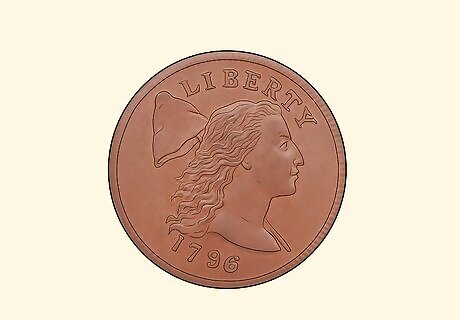
Look for coins that have been verified by outside sources. When possible, purchase coins that have been graded for quality and authenticity by groups like the American Numismatic Association. For specialty coins, make sure they come with a certificate of authenticity from the original mint.
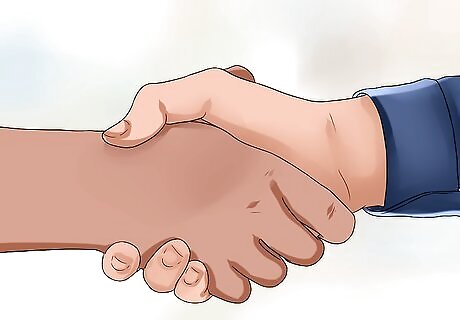
Feel free to swap. Once you have a few coins in your collection, you can begin to swap coins with other collectors. You can either swap online on sites like Numista or you can swap with a local coin collector near you. When swapping online, most of the time you will send and receive the coins via the mail.
Purchasing Coins
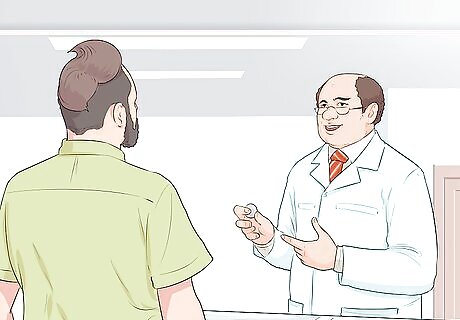
Visit a local coin shop. Though coin collecting is an incredibly niche hobby, many cities have at least one coin shop nearby. These stores offer a wide range of coins at competitive price-points, making them a great place for new collectors. Most shop owners are collectors at heart and can help you assess the value of individual coins, connect with other sellers, and find valuable, updated collecting resources. Some coin shops will purchase coins directly from consumers while others buy only from trusted retailers. Expect dealers to charge up to 20% more than individual sellers.
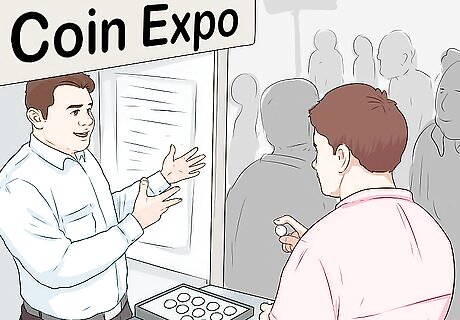
Go to coin auctions and expos. Though sporadic and not always local, coin auctions, expos, and other events are a great place to pick up new coins. Websites like AuctionZip can help you find upcoming auctions, while the American Numismatic Association keeps a list of upcoming coin and money expos on their website. Though eBay and other major marketplaces can yield good results, it is nearly impossible to check or ensure the quality of a coin before purchase. Instead, try specialty sites like Great Collections or Heritage Auctions.
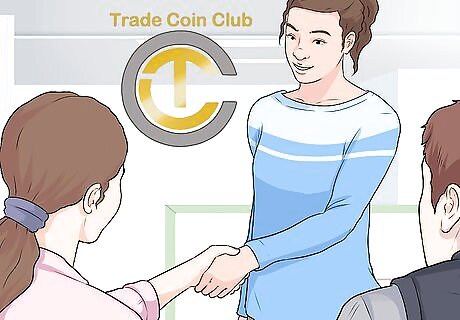
Join a coin club. In the short term, numismatic groups are a great way to meet fellow collectors, learn about upcoming events, and gain advice on how to expand your knowledge and collection. In the long term, club members who decide to sell their coins often give priority and lower prices to friends made through the organization. Organizations like the American Numismatic Association offer online directories that can connect you with local and regional clubs.
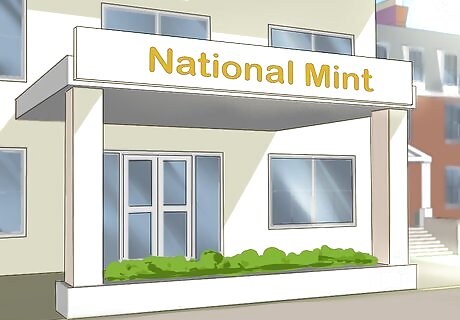
Order from a national mint. Many countries allow you to order specialty and commemorative coins directly from the national mint. Though mints charge above face value, they often include a certificate of authenticity and quality guarantee. Mints also sell uncirculated and proof coins, which are worth far more than their used counterparts.
Calculating Market Value
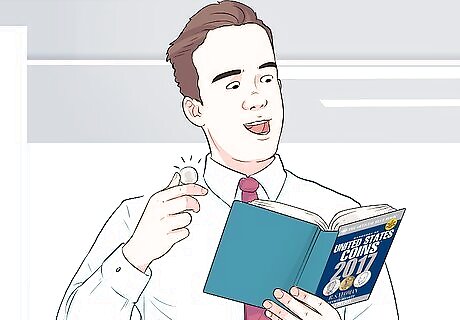
Buy the book before the coin. This is a common numismatic saying that means you should learn about a coin before spending money on it. Consult current pricing guides, like the printed Handbook of United States Coins or the web-based Professional Coin Grading Service, before committing to any purchases. These will allow you to find and compare the current market price of different coins and grades. For foreign coins, look at nation-specific guides and databases like Numista. For ancient coins, consult specialty books like Ancient Coin Collecting.
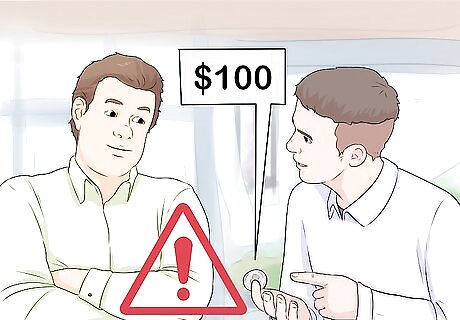
Avoid underpriced coins from professional sellers. If a deal sounds too good to be true, it probably is. If a coin is underpriced, check to make sure it’s real and hasn’t been buffed or polished to hide faults. If you found it at a garage sale, flea market, or similar establishment, the seller may not know the actual value of their merchandise, but specialty sellers and collectors certainly do.
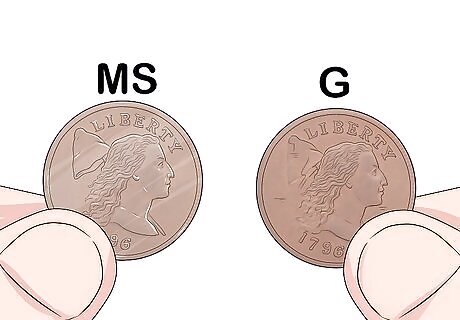
Learn how coins are graded. Coins are graded differently depending on the country and individual appraiser, but a good starting place is the Official A.N.A. Grading System for United States Coins. Here, coins are ranked on a scale from 0 to 70, with extra points being given to uncirculated coins. Letters are added to denote quality, like MS for Mint State or VG for Very Good. In this system, the highest quality coin is listed as MS-70. In general, US appraisers are more lenient than UK ones, so be aware that a perfect coin in one country may be considered flawed in another. Some people overgrade their own coins to make them more market friendly. To avoid being conned, make sure to double-check all coins using an official “by the book” standard. Remember that grading, even by a professional service, is subjective and that grading standards change over time.

Buy a magnifying glass. For serious collectors, purchase both a low powered and a high powered magnifying glass. This will allow you to look for small imperfections and signs of forgery, like coins with incorrect fonts or askew visual elements. Pay close attention to shiny coins, as details may have been buffed away to appear glossier.

Buy a scale. A portable electronic scale is an important investment for collectors making expensive purchases. Weighing a coin and comparing it to collecting guides can help you spot counterfeits made from cheaper materials. Additionally, weighing a coin can help you figure out its melt value, or how much it would go for if melted down into its raw materials.
Storing and Displaying Your Collection
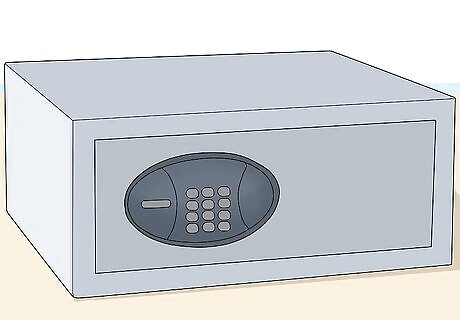
Purchase a safe to put your coins in. For committed collectors, purchase a water and fireproof safe that can be bolted to the ground. This will protect your investment from floods, fires, and burglars, something especially important when dealing with expensive items. If you are collecting particularly rare or expensive coins, upgrade to a safe-deposit box at your local post office or bank for extra security. If you have homeowners insurance to cover your coins, make sure to keep an updated inventory with pictures to prove quality.
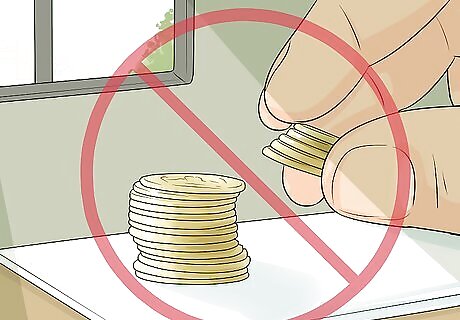
Avoid extreme temperatures, sunlight, and humidity. Like many other collectibles, coins should be kept in a comfortable, room-temperature environment with little moisture. Avoid attic or basement rooms, areas exposed to direct or indirect sunlight, and humidity, since all have the potential to damage your coins.
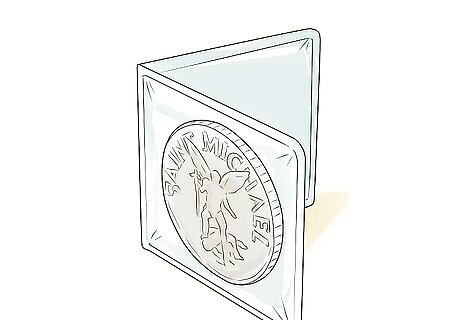
Purchase coin flips for individual coins. Coin flips are 2x2 holders generally made of vinyl or cardboard. Similar to record or trading card sleeves, they keep your coin away from the elements while allowing you to display them. Avoid poly vinyl (PVC) holders, as they can damage the coin over time, even etching the coin surface.
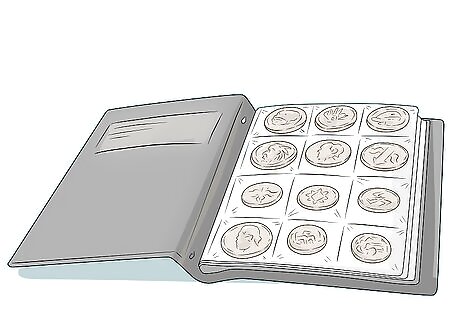
Purchase coin folders, boards, and albums for full collections. Like flips, coin album sleeves contain individual compartments that are bound together on binder-sized sheets. They can be purchased with a binder or separately. Coin folders and boards are specialty, cardboard containers with holes to push coins into. These are usually sold by type, with different folders for quarters, pennies, and the like.













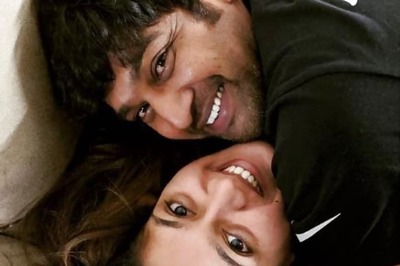

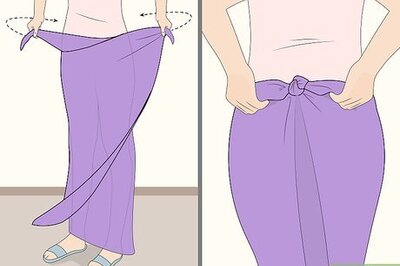

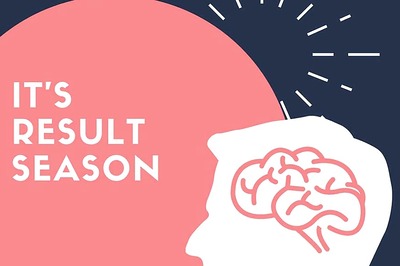


Comments
0 comment